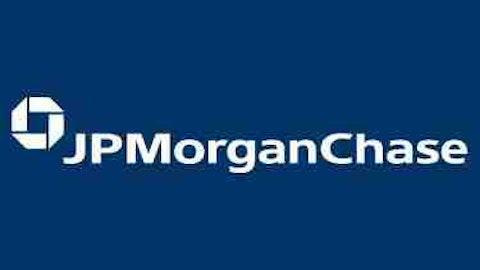In some previous articles regarding large banks, we have briefly noted a gap in the valuations between Wells Fargo & Company (NYSE:WFC) and other American banks in the course of our discussion. After further investigation, we came to the conclusion that, in particular, JPMorgan Chase & Co. (NYSE:JPM) and Citigroup Inc. (NYSE:C) make better values. We believe that this opportunity has arisen because of poor sentiment towards Citi (not entirely undeserved) and investor reactions to JPMorgan’s trading losses (a factor whose effect on the stock price is likely to dissipate over time). By investing in JPMorgan Chase & Co. and Citigroup Inc. instead of Wells Fargo & Company, an investor gets a somewhat smaller dividend yield (an average of 1.7% versus Wells Fargo’s 2.6%) but a considerably better priced stock based on trailing earnings multiples (an average of 8.5 versus Wells Fargo’s 11) and forward multiples (an average of 6.8 versus Wells Fargo’s 9.3).
The case for Wells Fargo over the other two banks rests on two points. The first is that JPMorgan (NYSE:JPM) and Citigroup (NYSE:C) are, flat out, riskier banks that have been overconfident in the past, and so it is likely that their equity should be underpriced compared to its book value- who knows what other assets on their balance sheets might be overvalued? Who knows how close they are to a London Whale-scale trading loss? The second is that while Citigroup and JPMorgan have their admirers in the hedge fund community- Citigroup, JPMorgan, and Wells Fargo (NYSE:WFC) all made our list of the ten most popular stocks among hedge funds in the first quarter- none can trump the name that in March reported owning 394 million shares of Wells Fargo for a position size of $13.5 billion: Warren Buffett’s Berkshire Hathaway.
We’d respond to the first point by emphasizing the scale of difference between these banks’ P/B ratios. Wells Fargo has a $180 billion market capitalization and trades at 1.3 times the book value of its equity. Citi has an $85 billion market capitalization and a P/B of 0.5, while JPMorgan has a $142 billion market cap and a P/B of 0.8. So the combined book value of Citi and JPMorgan is…$348 billion. Wells Fargo’s book value is…$138 billion. A $210 billion difference in book value shrinks to a $47 billion difference in market cap; alternatively, Citi and JPMorgan each have larger book values than Wells Fargo but combined only have a 26% higher market cap. Of course JPMorgan Chase & Co. and Citigroup have riskier books than Wells Fargo, but this risk is being overcompensated for in the market.
On the second point, while Citi and JPMorgan don’t have a Buffett figure in their corners, they can make some appeals to authority. Bill Ackman’s Pershing Square reported owning 26 million shares of Citi at the end of March (see more of Bill Ackman’s favorite stocks). Ackman sold his stake in favor of an activist stake in Procter & Gamble (NYSE:PG) but he revealed that he is still bullish about the stock. We think that this expresses a good deal of confidence in the bank. Billionaire hedge fund manager David Tepper is also bullish about Citigroup, initiating a brand new position during the first quarter. In the case of JPMorgan, CEO Jamie Dimon made a large purchase of JPMorgan stock last month, which is generally a bullish signal. In theory, an insider should only forgo diversification and put more of their wealth in the same company from which they derive their income if they are confident that the stock price will rise, and statistical tests of this theory have shown that stocks bought by insiders tend to outperform the market.
If we had, say, $18 billion and had to divide it between these three banks, we would rather buy 8% of JPMorgan Chase & Co. (NYSE:JPM) and 8% of Citigroup Inc. (NYSE:C) than buy 10% of Wells Fargo & Company (NYSE:WFC). We would get more earnings, and substantially more book value, for our purchase. Over time the negative sentiment towards JPMorgan and Citi should even out and these two banks should trade at more similar multiples to Wells Fargo.

